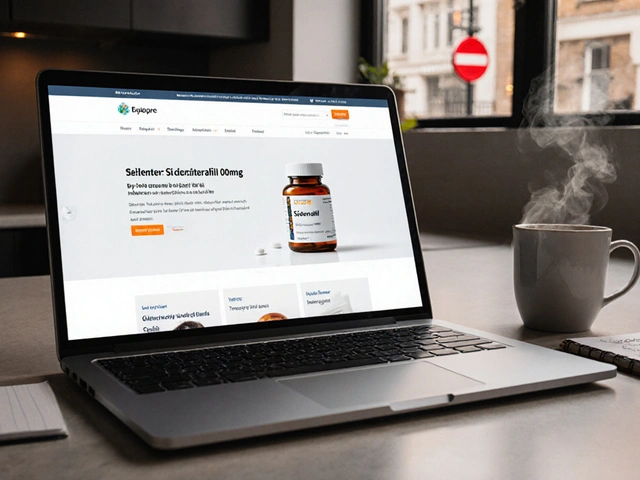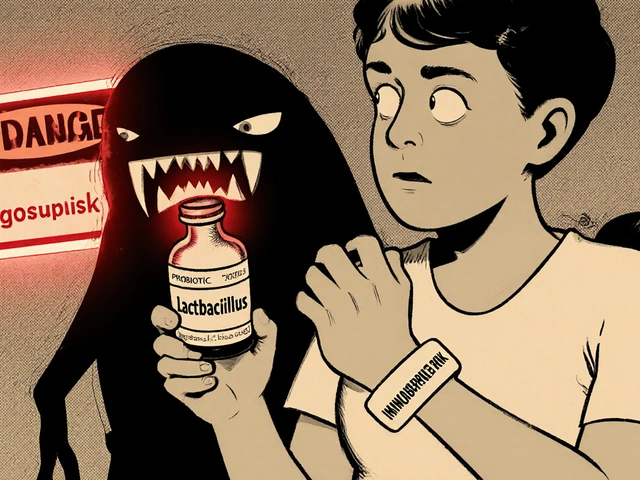Ever tried explaining ringworm at a date night? Yeah, awkward. But fungal infections don’t care if you’re prepping for holiday snaps or just want to wear sandals without feeling self-conscious. Terbinafine is the top pick for blasting these annoyances. It’s the go-to for doctor’s recommendations and is usually pretty quick at sorting things out. But, thanks to NHS wait times, last-minute GP appointments can feel as rare as a British summer. So a lot of people are starting to look online for antifungal solutions. Here’s the thing: not all online pharmacies are equal. Getting ripped off or accidentally buying fake meds? Nobody wants that. Especially not if you’re dealing with a toenail that belongs in a horror movie. But let’s get into the nuts and bolts, no fancy talk, just what you actually need to know.
What Is Terbinafine and Why Do People Need It?
Terbinafine isn’t something people rave about at parties, but it’s honestly brilliant if you’re dealing with stuff like athlete’s foot, persistent nail fungus, or those stubborn skin patches that won’t budge. It works by stopping fungi from producing a crucial part of their cell structure. Without this, the fungus pretty much collapses and dies off. Docs like it because it kicks in fast—most people notice improvement after just a couple of weeks. For tough toenail cases? It can take months, but there’s usually light at the end of the tunnel.
Why do so many people look for it online? First, embarrassment. Lots of folks would rather deal with these issues quietly instead of chatting about itchy feet with their GP. Second, time is precious. For instance, parents (me included) don’t want to juggle playdates and GP visits for something a chemist could handle. Terbinafine comes either as a cream (for skin) or tablets (for nails or deeper infections). Tablets are the main focus if you’re looking online, as UK chemists tend to require prescriptions for oral forms.
Most people are after terbinafine for onychomycosis—basically, nail fungus. This stuff is stubborn as a toddler refusing bedtime. You need at least six weeks (often longer) of tablets to sort out fingernails, and up to three months or more for toenails. Unlike the over-the-counter creams, the prescription route really gets deep down to where the fungus lives.
Even the NHS says terbinafine is usually the best bet for fungal nail infections. There are some who can’t take it—folks with liver problems, for example, or anyone allergic to the ingredients. Always double-check with a healthcare professional if you haven’t taken it before. Side effects aren’t common, but the most mentioned ones are tummy issues, headaches, or odd taste sensations. They’re usually nothing major, but it helps to know what you’re signing up for.
Where Can You Buy Terbinafine Online in the UK?
This is where people start feeling lost. Google “buy terbinafine online” and brace for a tidal wave of sketchy-looking websites and confusing choices. The most important thing? Only buy from registered UK pharmacies. The kind that asks for a prescription or has a legit online doctor service as part of the checkout. Yes, it feels like a pain to answer extra questions, but that’s literally your safety net.
The General Pharmaceutical Council (GPhC) is the body in charge of pharmacy regulation in England, Scotland, and Wales. Stick to online chemists listed on the GPhC register. There should be a green GPhC logo at the bottom of the site; click the badge to check if it links back to the actual register (not just an image on the page). Don’t skip this step! Some dodgy sites fake the logo and count on buyers not checking.
Some reputable names include Boots, LloydsPharmacy, Pharmacy2U, and Well Pharmacy. These pharmacies offer online consultations with medical professionals. The doctor quickly reviews your answers, and if everything checks out, they send a prescription to their own in-house dispensary. It’s a streamlined process—answer a short medical questionnaire, pick your medicine, pay (prices vary, usually around £20-£50 for one month’s supply), and get tracked delivery right to your door. Simple, private, and reliable.
Avoid websites offering Terbinafine without any medical checks, as these are usually based overseas and outside UK regulations. These tablets might be counterfeit or stored badly, which could mean zero results (or worse, dodgy side effects). Buying fake medicine is a genuine risk—an MHRA report in 2022 found thousands of UK buyers ending up with unsafe products containing everything from chalk to dangerous contaminants. And no, your card details aren’t safe with dodgy pharmacies either.

How to Stay Safe When Buying Prescription Medication Online
So many people stress about giving personal info or their medical history online, and honestly, that’s fair. But registered UK online chemists are subject to strict privacy laws. It’s nothing like posting your details on social media. Look for pharmacies that have clear privacy policies, show their GPhC registration, and offer some kind of customer support (even if it’s an email).
During checkout, you’ll usually be asked about allergies, medical conditions, other meds you might be taking, and why you want Terbinafine. It’s a bit of admin, but it takes almost no time and could prevent nasty complications, like mixing with the wrong meds.
Check for a valid UK address and a working phone number for the pharmacy, even if you don’t plan to call. If anything looks weird—grammatical errors all over the site, no company info, only bank transfer payment—run for the hills. Stick with sites offering card payments and normal UK delivery options. Most good online chemists use tracked delivery for medicines, sometimes with a signature on arrival for higher-value items.
Watch for price traps too. If a pack of terbinafine costs less than half of everywhere else, it’s probably too good to be true. Genuine tablets have a pretty steady market price. Drastically cheaper usually means fake, expired, or unregulated stock. I’ve seen people tempted by low prices, only to get pills that crumble in their hands or arrive in packaging covered in Cyrillic script. Yikes.
Lastly, check Trustpilot or other online reviews. They can be brutal but helpful. Genuine customer complaints—such as delivery delays, confused staff, or even fake products—show up quickly. If you see bad reviews repeating the same problems, choose another pharmacy.
Extra Tips for Online Terbinafine Buyers
So, you’re ready to hit ‘order’? Here are a few tips from someone who juggles work, kid’s football matches, and a house constantly full of socks. First, act quickly if you suspect a fungal infection—but don’t rush into buying from the first site you see. Snap a clear photo of the affected area to show your GP if you do need extra advice or future prescriptions. For parents, if you’re ordering on behalf of teenagers or someone else in your household, make sure you have their consent and all details correct when filling out online forms.
Delivery time matters. Many UK online pharmacies offer next-day service, but weekends and bank holidays can stretch this out. Plan about three to five days ahead, especially if you’re dealing with a persistent nail infection. Store terbinafine tabs in a cool, dry cupboard—actual medicine cabinets probably don’t get used for anything else these days, but they work best for this. Double-check expiry dates as soon as your box arrives. If something feels off (unsealed packaging, odd-smelling tablets), don’t use them. Contact the pharmacy’s support immediately.
If you don’t see rapid improvement, don’t panic. Fungal infections can be stubborn. Toenails grow slow—your average big toe nail grows just 1.5mm a month, so expect progress, but a marathon not a sprint. Sick of the wait? The best hack is to trim infected nails short and keep them dry. Junk the old socks and shoes if you can (as annoying as it is to throw out your lucky trainers) because fungal spores love a warm, dark, sweaty hideaway.
If you’re like me and have to Google every label before swallowing anything, you’ll also want to avoid alcohol with terbinafine—you’ll process the medication via your liver, so look after it. And if you’re sorting family prescriptions, remember that Terbinafine tablets aren’t usually recommended for kids under 12, unless a healthcare pro specifically says it’s fine.
The last word? Keep your order confirmation emails and any pharmacy consultation records—especially if you need proof of prescription or, fingers crossed, want to claim back on insurance. There’s nothing fun about dealing with paperwork, but trust me, it beats trying to explain missing box numbers to pharmacy staff on a grey Monday morning in Manchester.







Write a comment
Your email address will be restricted to us